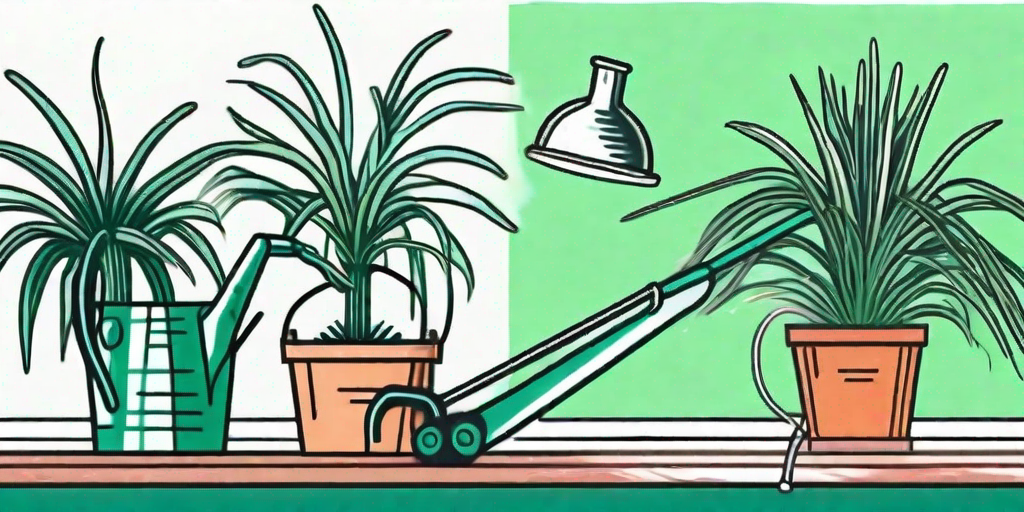
Ah, the humble spider plant. It's the darling of the houseplant world, gracing windowsills and bookshelves with its cascading fronds of green and white. But what happens when your spider plant starts looking a little...off? Drooping leaves, yellowing tips, a general air of sadness? Fear not, dear reader, for we have the answers to your spider plant woes. Let's dive in, shall we?
Understanding Your Spider Plant
What is a Spider Plant?
First things first, let's get to know our subject. The spider plant, or Chlorophytum comosum if you want to get fancy, is a perennial flowering plant native to tropical and southern Africa. It's known for its long, arching leaves that grow from a central rosette, much like a spider's legs. Hence the name. Clever, right?
Spider plants are popular houseplants because they're hardy, adaptable, and frankly, pretty hard to kill. But that doesn't mean they're invincible. Like all living things, they have their needs and preferences. Ignore these, and your spider plant might start throwing a tantrum in the form of drooping leaves.
Why Do Spider Plant Leaves Droop?
There are several reasons why your spider plant might be looking a little down in the dumps. Overwatering, underwatering, too much light, not enough light, cold drafts, hot drafts...you get the idea. Spider plants are drama queens. But don't worry, we'll go through each of these issues in detail and provide solutions to perk up those drooping leaves.
Before we do that, though, let's take a moment to appreciate the resilience of the spider plant. Despite its dramatic tendencies, it's a survivor. With a little TLC, your spider plant can bounce back from the brink of death and thrive once more. So don't lose hope, plant parent. Your spider plant needs you.
Reviving Your Spider Plant
Watering Your Spider Plant
Watering is often the root of all plant problems (pun absolutely intended). Spider plants like their soil to be moist, but not waterlogged. Overwatering can lead to root rot, which can cause leaves to droop and yellow. On the other hand, underwatering can leave your spider plant parched and droopy.
So how much water does a spider plant need? A good rule of thumb is to water thoroughly, then let the top inch of soil dry out before watering again. And always make sure your pot has good drainage. Spider plants hate soggy bottoms as much as Mary Berry.
Lighting for Your Spider Plant
Spider plants are not sun worshippers. They prefer bright, indirect light. Too much direct sunlight can scorch their leaves, causing them to droop and turn yellow or brown. Too little light, on the other hand, can stunt their growth and lead to droopy leaves.
So where should you place your spider plant? A north or east-facing window is ideal. If that's not possible, you can place it near a south or west-facing window, but shield it from direct sunlight with a sheer curtain. Remember, spider plants are like vampires—they like their light filtered.
Temperature and Humidity for Your Spider Plant
Spider plants like it warm and humid, but not too warm or too humid. They prefer temperatures between 15-24°C (60-75°F), and humidity levels of 40-50%. Anything outside this range can stress your spider plant and cause droopy leaves.
To increase humidity, you can mist your spider plant, place it on a tray of pebbles with water, or use a humidifier. To maintain the right temperature, keep your spider plant away from cold drafts and hot radiators. Remember, spider plants are Goldilocks—they like it just right.
FAQs
Why are the tips of my spider plant turning brown?
Brown tips can be a sign of underwatering, low humidity, or a buildup of salts and chemicals from tap water. Try using distilled or rainwater to water your spider plant, and increase humidity if necessary.
Why is my spider plant not producing babies?
Spider plants usually produce babies, or spiderettes, when they're happy and healthy. If your spider plant isn't producing babies, it might be stressed due to improper care. Check your watering, lighting, temperature, and humidity levels.
Can I propagate my spider plant from a leaf?
Yes, you can propagate a spider plant from a leaf cutting. Just make sure the cutting includes a node, or growth point, and place it in water or soil. With a little patience, you'll have a new baby spider plant in no time.
Conclusion
And there you have it, folks. The comprehensive guide to reviving your spider plant. Remember, spider plants are resilient. With the right care, they can bounce back from almost anything. So don't despair if your spider plant is looking a little droopy. Just follow our tips, and your spider plant will be back to its perky self in no time.
Now go forth and be the best plant parent you can be. Your spider plant is counting on you.















